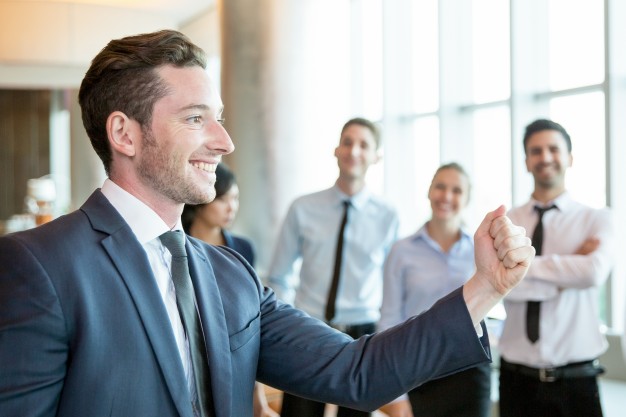In marketing and brand strategy, few tools promise deeper empathy than well-crafted consumer personas. A persona distills complex human motivations, barriers, and goals into a relatable narrative. Done well, a persona guides product innovation, sharpens messaging, and ensures every customer touchpoint resonates with authentic understanding.
At Provoke Insights, we encourage brands to display their personas proudly — on office walls, in meeting rooms, and within digital workspaces — so they remain visible to everyone, from manufacturing teams to operations, marketing, and sales. When personas stay front and center, they become more than research outputs. They become a unifying compass for how a brand should operate, serve, and communicate. They remind every division of whom they truly serve and why.
However, too many personas remain frozen in time, created once and then left to gather dust. Consumers do not stand still. They age into new life stages, adopt emerging cultural values, and respond to social, economic, and technological change. The persona that once served as a compass becomes a relic, quietly steering strategy off course.
Brands that treat personas as living frameworks, not static descriptions, protect themselves from this drift. They continuously observe, listen, and evolve. In doing so, they secure a competitive advantage grounded in deep, real-time relevance.
What Exactly Is a Persona?
A persona is a vivid, evidence-based archetype of a customer segment. Unlike broad demographic profiles, personas go further: they capture beliefs, decision-making drivers, frustrations, and emotional triggers.
Effective personas weave together three research threads:
- Segmentation Research
This quantitative phase defines who the audience segments are and how they differ from one another. It identifies meaningful clusters based on attitudes, needs, or behaviors, not merely demographics. - Qualitative Exploration
Once segments are clear, qualitative research such as interviews, ethnographies, or digital diaries uncovers the human truths behind the numbers. It reveals how people articulate their goals, what trade-offs they accept, and how context shapes choices. - Supporting Secondary Insights
Industry reports, cultural trend analyses, and competitive intelligence provide additional context. They help ensure that each persona reflects current realities, not outdated assumptions.
When combined, these inputs produce a humanized portrait. A persona includes a descriptive name, a narrative summary, practical goals, common pain points, illustrative quotes, and sometimes visuals that capture the tone and style of the customer’s life.
Why Static Personas Are a Strategic Risk
No consumer remains static. Even within a year, new life events and cultural forces can shift what matters. A student becomes a parent. A newlywed couple faces economic uncertainty. A once loyal buyer adopts sustainable living and rethinks brands that fail to align.
When brands neglect these changes, they continue to craft products, campaigns, and experiences for an audience that no longer exists in the same form.
Consider two cautionary examples:
The Outdoor Enthusiast
An outdoor gear brand anchored its campaigns on thrill-seeking solo adventurers. Over time, many loyal customers transitioned to family life, prioritizing safety and shared experiences. By ignoring this evolution, the brand lost share in the lucrative family adventure market to more responsive competitors.
The Luxury Shopper
A luxury skincare company fixated on prestige messaging. New qualitative interviews revealed that affluent consumers increasingly expect ethical sourcing and environmental transparency. While the brand insisted on timeless glamour, competitors captured market share with credible sustainability stories.
Outdated personas quietly erode brand relevance. The consequences often begin as subtle disengagement and eventually escalate to lost loyalty and declining growth.
A Sophisticated Approach: How to Keep Personas Alive
Ensuring that personas remain accurate, relevant, and strategically powerful requires an intentional, research-driven process. Brands that succeed make persona upkeep a core part of their insights culture.
- Display and Embed Personas Across the Organization
Keep personas visible and accessible. Encourage every team, from research to operations and logistics, to revisit them regularly. Use personas to test whether new initiatives align with customer expectations and values. - Schedule Systematic Updates
Commit to validating and refreshing personas on a clear cycle. Many industries benefit from annual updates. Highly dynamic markets gain advantage from semi-annual checks. Use these milestones to confirm that core segments still exist in the same form and to test whether needs and motivations have shifted. - Rely on Ongoing Research to Illuminate Change
Do not rely solely on internal assumptions or passive data signals. Proactively design continuous research programs that blend multiple methods:
- Pulse Surveys: Short, targeted surveys that capture shifts in attitudes or behaviors quickly.
- Qualitative Diaries and Mobile Ethnography: Real-time windows into everyday life that reveal subtle shifts traditional surveys miss.
- In-Depth Interviews: Annual or semi-annual interviews to probe evolving motivations and context in the customer’s own words.
- Community Panels: Ongoing dialogue with a curated group of core customers who can provide longitudinal feedback.
This ongoing research pipeline keeps personas aligned with real life, not out-of-date assumptions.
- Monitor Macro and Micro Trends
Combine cultural trend reports with social listening and grassroots community insights. Broader trends explain large societal changes, while micro signals hint at niche behaviors that may scale. Together, they expand the perspective of what may influence your customer next. - Foster Cross-Functional Stewardship
Personas must be owned by the whole business, not by marketing alone. Equip teams in product, customer service, and innovation to flag emerging shifts in customer needs. Encourage frontline staff to share stories and observations that can enrich the persona narrative.
A Final Thought
Personas are more than static slides. They are living commitments to see customers as people in motion. By investing in disciplined, continuous research and ensuring every team keeps these portraits close, brands build enduring relationships, stay culturally relevant, and strengthen their competitive edge in an ever-changing world.
Want to learn how to get started with Personas? Check out these useful blogs & case studies.























